The Answer To Holiday Staffing Woes: Passive Job Seekers Are Active AM/FM Radio Listeners
As Americans gear up for the holiday retail season, there’s a holiday staff shortage plaguing many retailers, as revealed in a recent Wall Street Journal article.
It’s hard for companies to find qualified workers because the job market is healthy. The need for holiday employee support was one of the reasons cited by the New York Times for Amazon’s announcement of boosting hourly wages. Since the Great Recession in December 2007, the economy has strongly recovered, surpassing pre-crash levels:
- There are 7 million more full time employed workers today than before the recession
- Unemployment levels are at record lows
- There are two million more job openings than before the Great Recession
With lower levels of unemployment, it can be difficult for businesses and stores to find potential employees. But the opportunity to reach quality candidates exists with passive job seekers. To analyze the national employment ecosystem and profile the passive job seeker, Westwood One fielded a study with MARU/Vision Critical. Here are some of our key findings:
1. Passive job seekers are the #1 source of new workers in America. These are workers who are not actively looking for a new job. Virtually 1 in 2 Americans (49%) identify themselves as a passive job seeker: “I might consider the right new job” (35%) or “I am definitely willing to consider a new job” (14%). There are three times more passive job seekers than active job seekers (49% versus 15%). As such, it is crucial that companies tailor their messaging and media plans to attract these passive candidates.
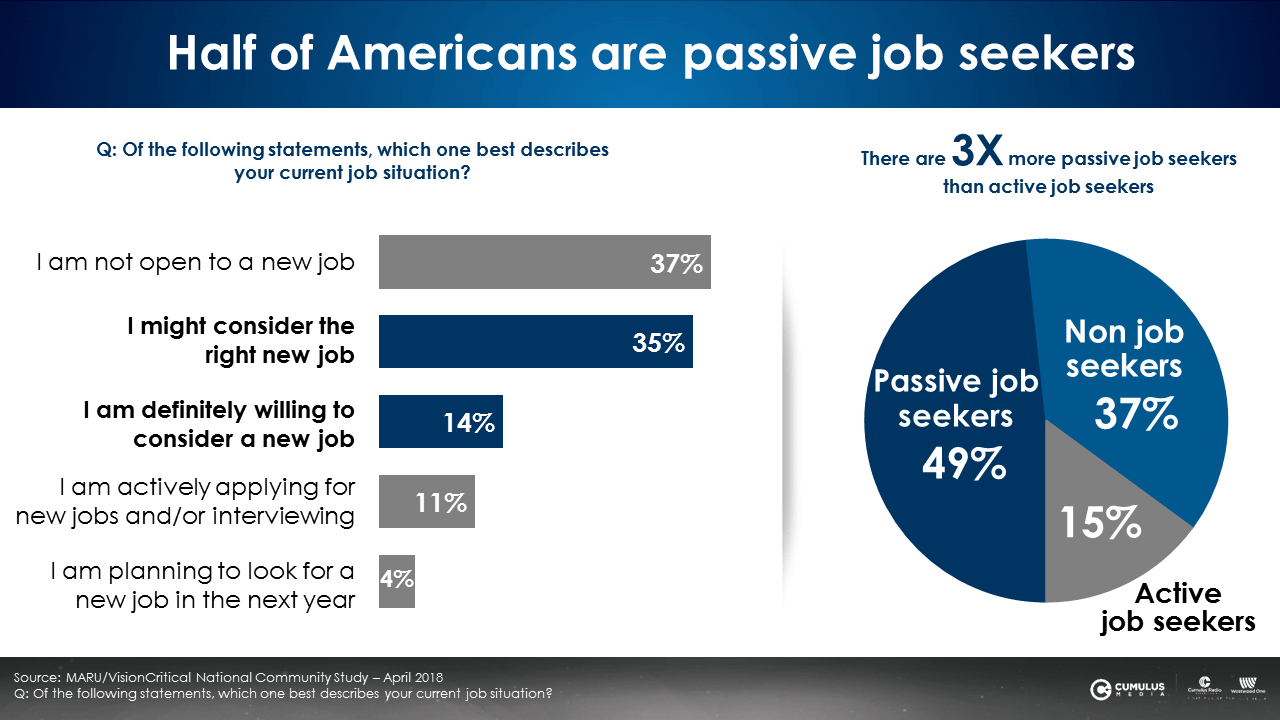
2. Passive job seekers are female, older skewing, and married. Women account for 60% of passive job seekers. 35-64 year olds comprise 76% of passive job seekers. Nearly 1 in 2 (49%) are married.
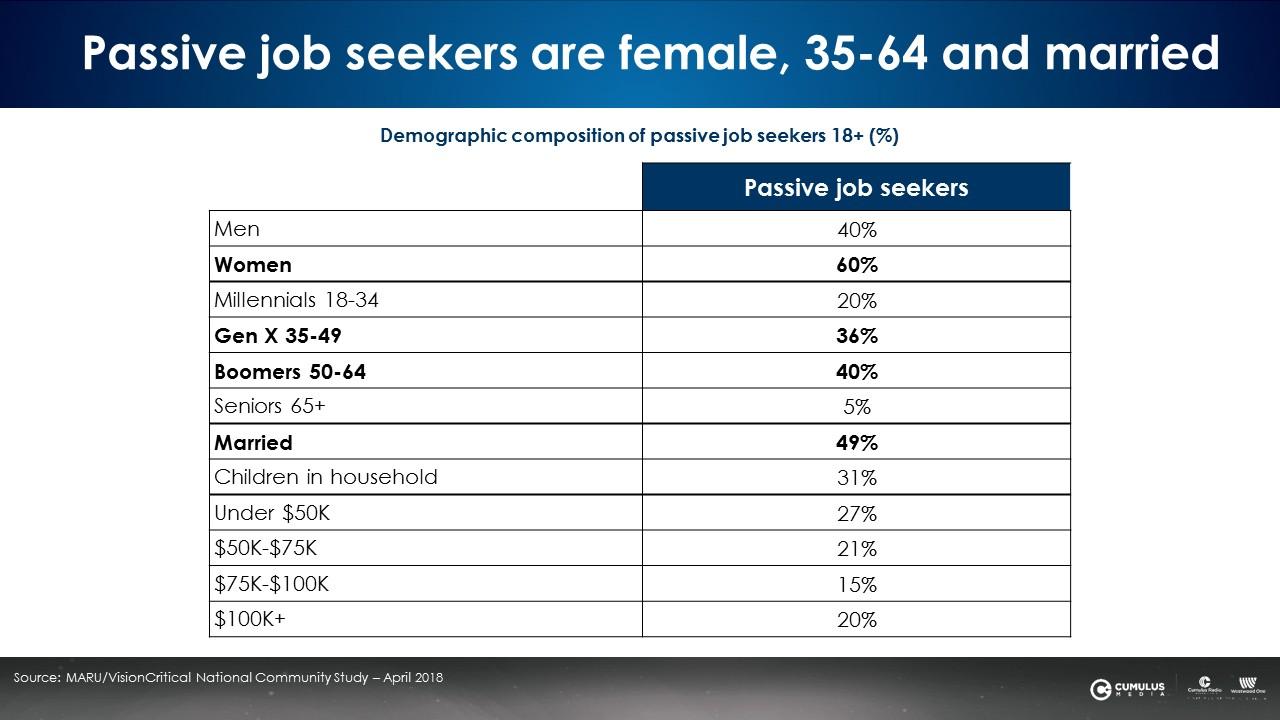
3. Ad copy should focus on emotional drivers that target passive job seekers. “What I do at work matters and makes an impact,” “Having fun at work,” and “Being rewarded for what I do” are key attributes that resonate with job seekers. Active job seekers indicate their current positions do not rate well on these three attributes. Those not in the job market strongly agree that their current role fulfills these three sentiments.
Passive job seekers are in the middle. They do not rate their current role as highly as the satisfied workers who are not in the job market. Yet, passive job seekers show stronger agreement with these attributes than active seekers. Companies need to convince these “on the fence” job seekers to actively consider an opportunity with their company.
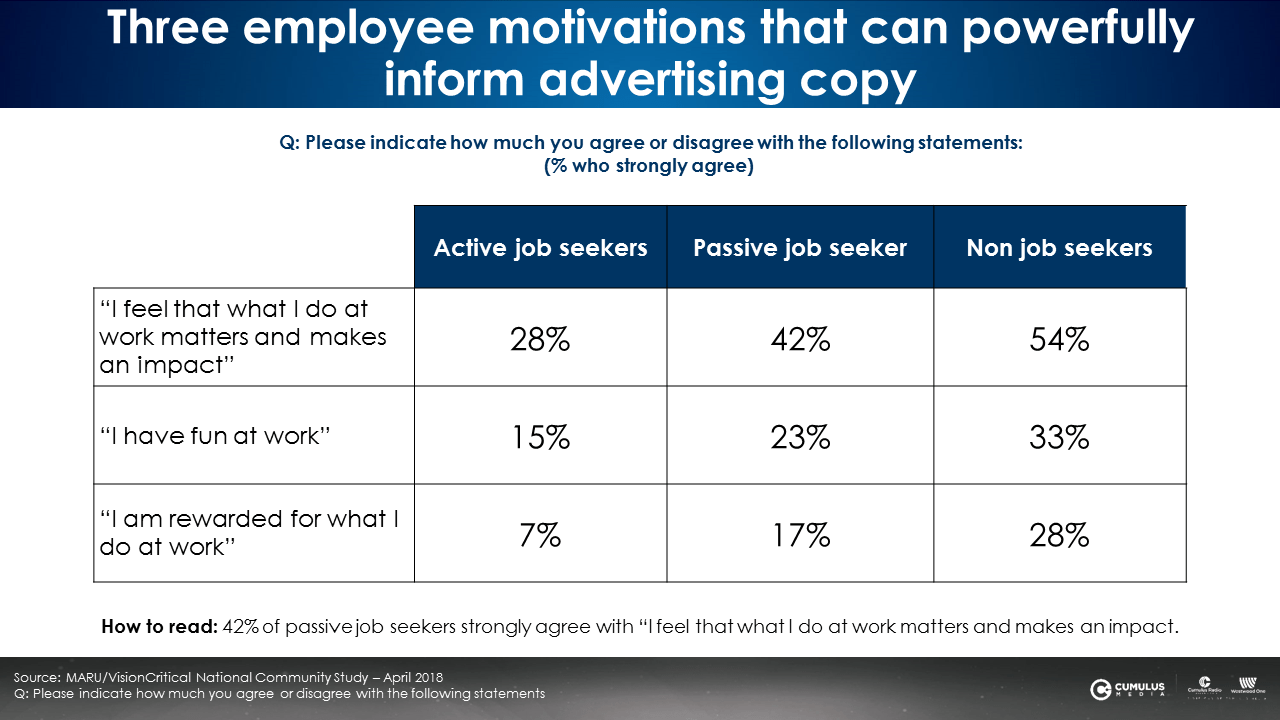
4. Passive job seekers do not use online job sites. They don’t call them “passive” job seekers for nothing! Few passive job seekers use Indeed.com, LinkedIn, CareerBuilder, ZipRecruiter, and Glassdoor. Companies who solely rely on online job sites to recruit new hires are missing out on a gigantic portion of the candidate pool that’s three times larger than active job seekers. Adding a mass reach machine like AM/FM radio to the media plan can help secure these hard to reach candidates.
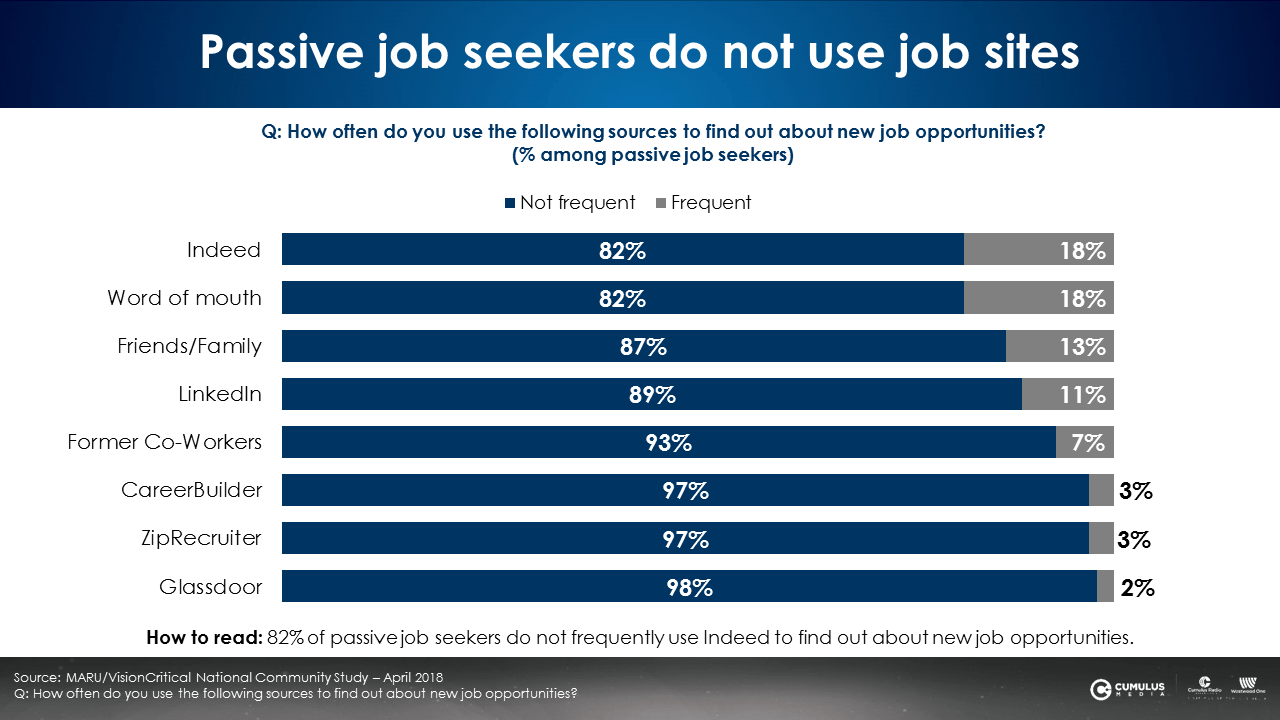
5. AM/FM radio reaches 93%, virtually all passive job seekers. AM/FM radio has extraordinarily strong reach among full-time working adults across multiple dayparts. There are also a strong variety of radio programming formats that reach passive job seekers. AM/FM radio is the soundtrack of the American worker and incorporating AM/FM radio into a media plan is crucial when trying to reach your ideal candidate.
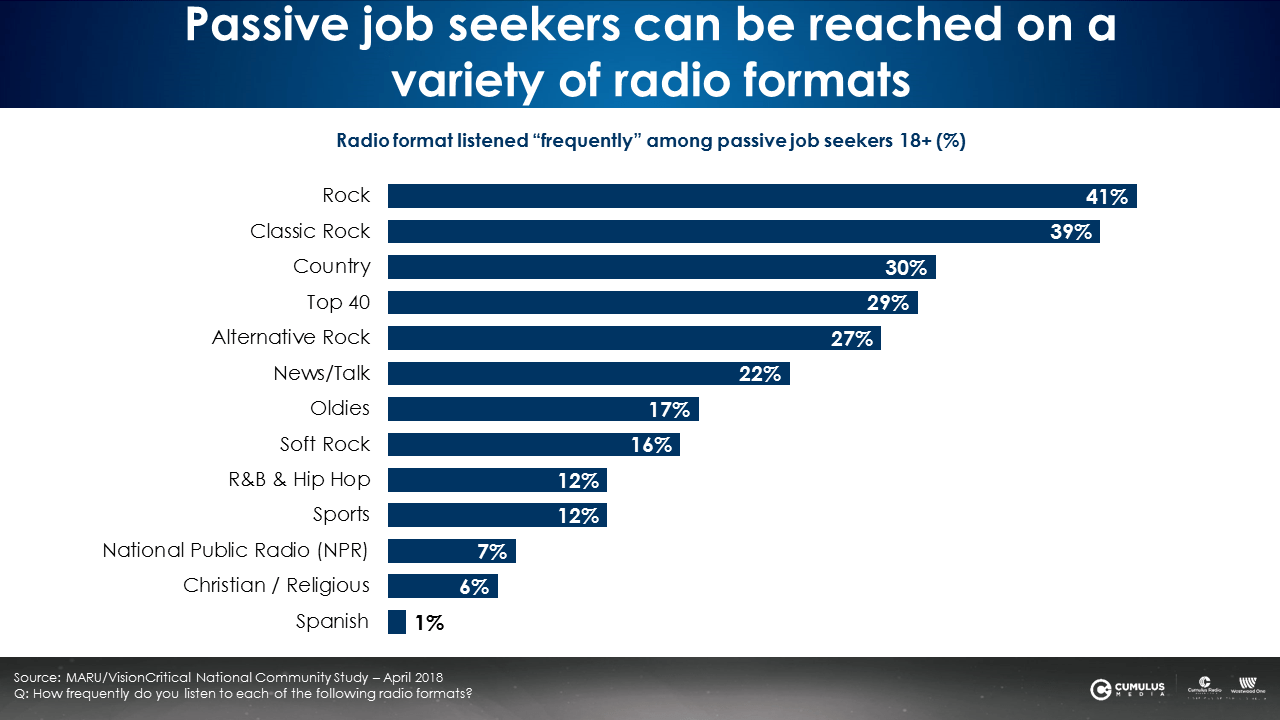
Key findings:
- Passive job seekers are the #1 source of new workers in America.
- Passive job seekers are female, older skewing, and married.
- Ad copy could focus on emotional drivers that target passive job seekers.
- Passive job seekers do not use online job sites.
- AM/FM radio reaches 93%, virtually all of passive job seekers.
Brittany Faison is the Insights Manager at CUMULUS MEDIA | Westwood One.
Contact the Insights team at CorpMarketing@westwoodone.com.